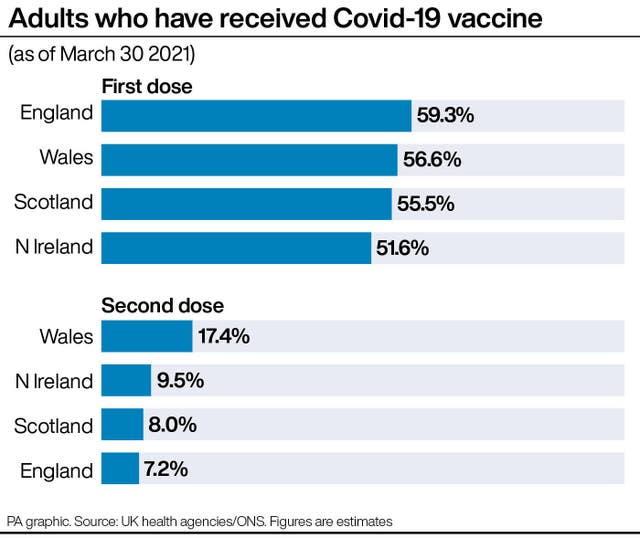Second doses of Covid-19 vaccine outnumber first doses for first time
More than four million people in the UK are now fully vaccinated.

Second doses of Covid-19 vaccine in the UK have outnumbered first doses for the first time.
A total of 270,526 second doses were registered on March 30, compared with 224,590 first doses, according to the latest Government figures.
Previously the number of first jabs per day had always exceeded second jabs.
A total of 4.1 million people in the UK are now fully vaccinated against Covid-19, the equivalent of around one in 13 (7.8%) of adults.

Second doses are likely to exceed first doses on most days over the next few weeks.
Vaccine supplies will be focused on giving second doses to people who had their first jab in January and February.
Prime Minister Boris Johnson, speaking at a Downing Street press conference on Monday, said that “for many people, April will be the ‘second dose month’.”
A second dose of vaccine has to be administered within 12 weeks of the first.
The number of people in the UK who have received both doses of vaccine has accelerated in March, passing one million on March 4, two million on March 18, three million on March 25 and four million on March 30.

The rollout of second jabs has not gone at the same pace in all four nations of the UK, however.
In Wales, around one in six (17.4%) of adults are now estimated to be fully vaccinated – well ahead of Northern Ireland (9.5%), Scotland (8.0%) and England (7.2%).
The figures for first doses put England in front on 59.3% of adults, followed by Wales (56.6%), Scotland (55.5%) and Northern Ireland (51.6%).
A total of 30.9 million people in the UK have now received a first dose of Covid-19 vaccine.
The Government has set a target of offering a first jab to everyone in the top nine priority groups – estimated to be 32 million people – by the middle of April.





